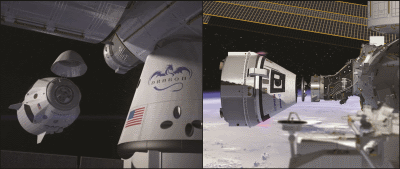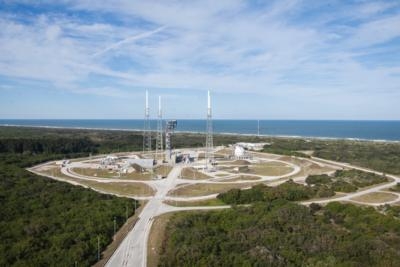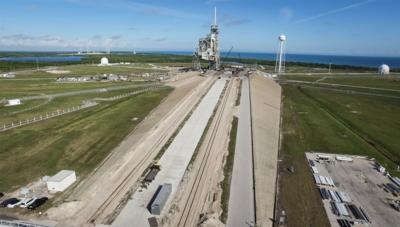NASA Exercises Options For Crewed Space Flights With Boeing And SpaceX
NASA took another big step to ensure reliable crew transportation to the International Space Station into the next decade. The agency’s Commercial Crew Program has awarded an additional four crew rotation missions each to commercial partners, Boeing and SpaceX, to carry astronauts to and from the International Space Station.

The four additional missions will fly following NASA certification. They fall under the current Commercial Crew Transportation Capability contracts, and bring the total number of missions awarded to each provider to six.
The additional flights will allow the commercial partners to plan for all aspects of these missions while fulfilling space station transportation needs. The awards do not include payments at this time.
"Awarding these missions now will provide greater stability for the future space station crew rotation schedule, as well as reduce schedule and financial uncertainty for our providers," said Phil McAlister, director, NASA’s Commercial Spaceflight Development Division. “The ability to turn on missions as needed to meet the needs of the space station program is an important aspect of the Commercial Crew Program.”
The two commercial spacecraft also will provide a lifeboat capability to allow the astronauts aboard the station to return safely to Earth in an emergency, if necessary.

Returning human launch capabilities to U.S. soil underscores NASA’s commitment to the station and the research that the orbiting laboratory makes possible including the advancement of scientific knowledge off the Earth, for the benefit of those on the Earth and to prepare for future deep space exploration.
The Commercial Crew Program will help NASA get full operational use from the national laboratory for scientific research by increasing the number of astronauts on the space station, and allowing the crew members to dedicate more time to research.
The commercial crew vehicles will transport up to four astronauts for NASA missions, along with about 220 pounds of critical cargo to the space station.
More time dedicated for research allows NASA to better understand the challenges of long-duration human spaceflight without leaving low-Earth orbit. As NASA develops the Orion spacecraft and the Space Launch System rocket for deep space missions, including the journey to Mars, NASA is turning over low-Earth orbit crew and cargo transportation to commercial companies. This two-pronged approach is critical to achieve the agency’s exploration goals.

Boeing’s uncrewed flight test, known as an Orbital Flight Test, is currently scheduled for June 2018 and its crewed flight test currently is planned for August 2018. SpaceX’s uncrewed flight test, or Demonstration Mission 1, is currently scheduled for November 2017, followed by its first manned flight test in May 2018. Once the flight tests are complete and NASA certifies the providers for flight, the post-certification missions to the space station can begin.
Boeing and SpaceX are developing two unique human space transportation systems. They also are upgrading necessary infrastructure, including launch pads, processing facilities, control centers and firing rooms.
Boeing is developing the CST-100 Starliner that will launch on a United Launch Alliance Atlas V rocket from Space Launch Complex 41 at Cape Canaveral Air Force Station. SpaceX is developing the Crew Dragon to launch on the company’s Falcon 9 rocket from Launch Pad 39A at the agency’s Kennedy Space Center. Both are located on Florida’s Space Coast.
(Images provided with NASA news release)
 ANN's Daily Aero-Term (04.26.24): DETRESFA (Distress Phrase)
ANN's Daily Aero-Term (04.26.24): DETRESFA (Distress Phrase) Aero-News: Quote of the Day (04.26.24)
Aero-News: Quote of the Day (04.26.24) ANN's Daily Aero-Term (04.27.24): Direct
ANN's Daily Aero-Term (04.27.24): Direct ANN's Daily Aero-Linx (04.27.24)
ANN's Daily Aero-Linx (04.27.24) Aero-News: Quote of the Day (04.27.24)
Aero-News: Quote of the Day (04.27.24)





